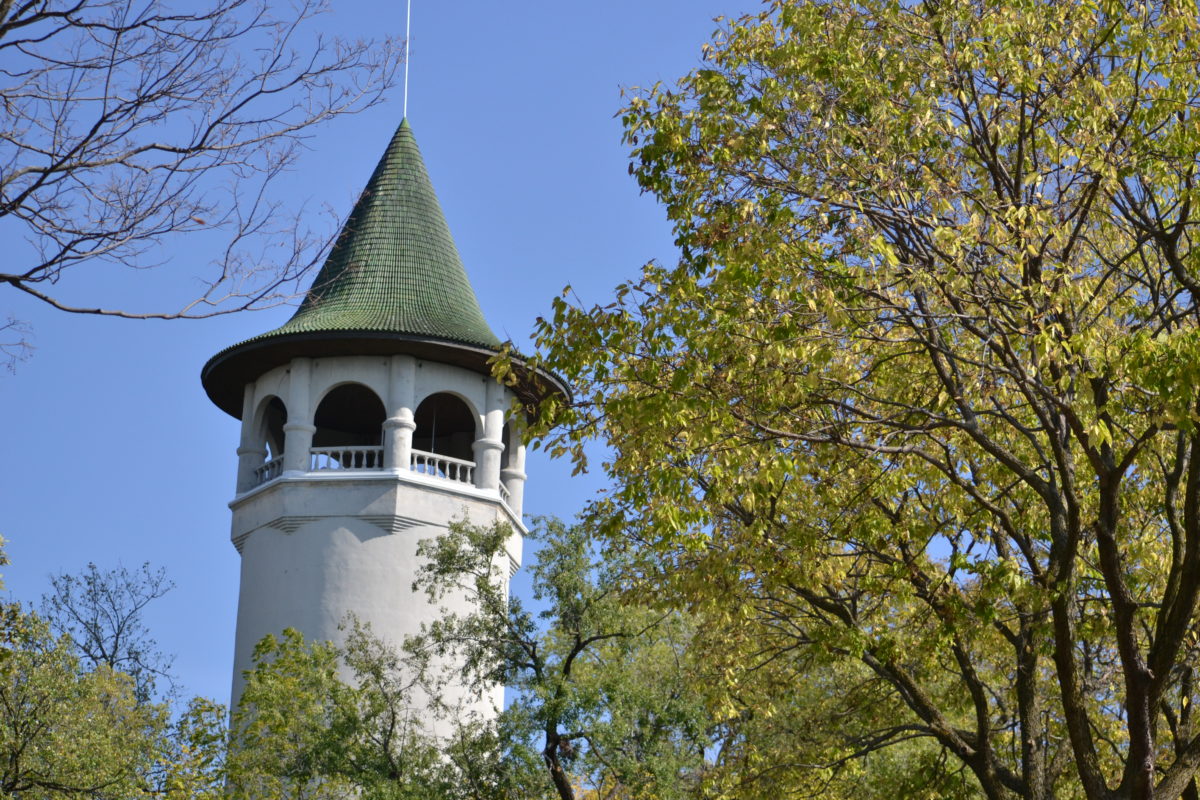The Minneapolis City Council is working with the Prospect Park community to create a plan to restore the Witch’s Hat Tower.
The city will have until the end of the year to review plans submitted by the community and the Prospect Park Association (PPA) to restore the Witch’s Hat Tower. The 110-foot tower was built in 1913 with a holding capacity of up to 150,000 gallons of water. The Tower was built on the highest natural point in Minneapolis but didn’t allow for adequate water pressure.
The Tower has been closed off from the public since 2019 after falling into disrepair. Prospect Park is now working with the city to create estimates on restoring the neighborhood landmark.
“This is very much a cultural landmark, not only for Prospect Park but for the city,” Councilmember Robin Wonsley (Ward 2) said.
The city received an assessment report in June from KLJ, an engineering and planning firm, with a list of options for how to repair the Tower. According to Wonsley, whose office has led the planning on the Tower’s restoration, the city will spend $350,000 to make the Tower safe for events.
The report offered two other options: $50,000 to keep the structure standing or $1.3 million for extensive repairs to have it be regularly open for visitors.
The June site assessment report recommended repairing all concrete spalling on the inside walls, designing and repairing the observation deck to better combat outside elements and repairing steel supports throughout the staircase. Repairs would be done in a way that ensures the Tower’s original design remains the same, according to the report.
Wonsley added city attorneys are also working to create a Memorandum of Understanding (MOU) to develop plans for neighborhood organizations and the city to reopen the cultural landmark and continue to maintain it.
A MOU is a formal agreement that outlines a plan of action between two or more parties. Although the MOU and finding how to cover costs are the first steps, there is no timeline for the Tower’s restoration, according to Wonsley.
“I’m excited about working with our staff to figure out how we can support our residents and be able to just appreciate and take advantage of this valuable landmark more often,” Wonsley said.
Joe Ring, a member of Friends of Tower Hill Park, said Prospect Park residents bought the land in 1906 when growing plans to build a water tower. Ring said the hope was to increase water pressure for residents on the hill, but people pushed for the project to be more than just a water tower.
“The one provision that the residents said they have to have was the view deck,” Ring said. “We had to have a view deck and it had to be open to the public.”
For the next two decades, the Tower had caretakers that neighborhood kids visited and lovingly referred to as wizards. However, Witch’s Hat was emptied after facing economic struggles during the Great Depression.
Minneapolis decommissioned the water tower in 1952 because of the high cost of pumping water up the tower. The city upgraded technology and converted the building into a radio tower which ran until 2007. In 2007, the last broadcast aired the I-35W bridge collapse.
“Not only was it inconvenient, but if you can imagine, if you had a fire, the fire hydrants are basically almost useless,” Ring said, referring to the inadequate water supply of the Tower.
Ring added he remembers being up in the Tower decades ago to watch the Fourth of July fireworks and, due to the lack of lighting, Ring and others were injured going down the stairs of the Tower. Soon after, the community received a notice from the neighborhood association to talk about the Tower’s safety issues.
Ring said the Tower was designated as a historical building after decades of not being used and became a place the neighborhood visited and often held celebrations, such as the 100th anniversary of the Tower in 2014, but ceased operations during the COVID-19 pandemic.
“There were problems and, with COVID, everything just stopped,” Ring said. “The little that Parks and Recreation was doing just stopped and the place got pretty ragged.”
Ring added the site’s historical designation helped the push to find new plans for the Tower.
Lynn Von Korff is a member of the PPA who grew up in the neighborhood and said the Tower was a staple in her and others’ childhoods. Korff recounted going up Tower Hill with her brothers and friends to sled down the then-treeless slope in the winter.
“It was very cool and young people still do the same thing,” Von Korff said. “As an older person, it’s really cool seeing young people doing what you did as a kid.”
Von Korff said before the Tower was closed, it was always a very popular and sentimental spot for residents, and during the 2019 Doors Open event, which takes place over a weekend every May, the Tower had a total of 4,000 visitors.
Von Korff added that another 1,200 people visited the Tower for the Pratt School ice cream social in 2019.
“The last social event was in 2019 and there were so many people in the line, we had to ask people to no longer get in line because it snaked several blocks around,” Von Korff said.
Not only has the Tower been an important part of the neighborhood’s culture and history, it has become a landmark symbolizing home for Prospect Park residents, according to Von Korff.
“You see it from a distance and it’s telling you you’re home,” Von Korff said.














